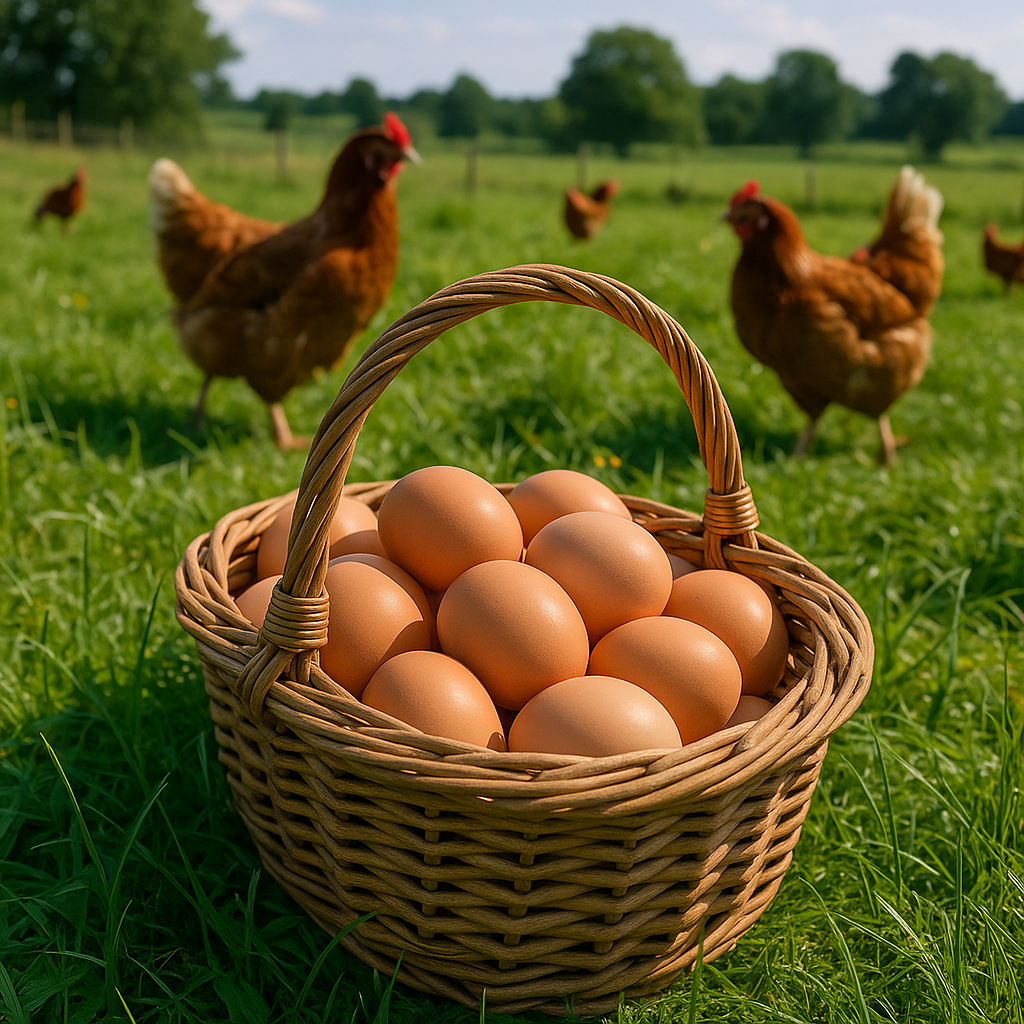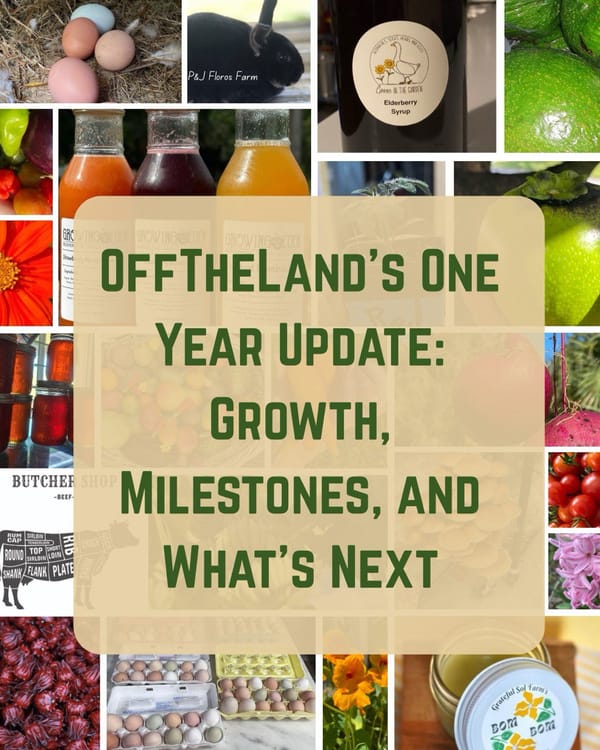Egg Nutrition 101: Why Sunlight & Feed Matters
Studies show pasture‑raised eggs can carry up to twice the omega‑3s, three times the vitamin D, and more antioxidant carotenoids than standard grocery‑store eggs.

Eggs Are Tiny Superfoods (But Only If the Hen Is Fed Well)
Crack open any egg and you unlock a near‑perfect bundle of protein, good fats, and micronutrients. Yet the real super‑egg happens only when the hen herself is living her best life. Studies show pasture‑raised eggs can carry up to twice the omega‑3s, three times the vitamin D, and more antioxidant carotenoids than standard grocery‑store eggs. In other words, the bird’s lifestyle writes your nutrition label. That makes the hunt for locally raised, well‑fed, sun‑soaked hens more than a feel‑good shopping trip—it’s a tangible boost to your own diet.
How a Hen’s Diet Writes Your Nutrition Label
Hens can’t just "magic" the essential nutrients out of thin air. Every gram of lysine for muscle repair, linoleic acid for cell membranes, or selenium for thyroid health must first pass through the feed trough. Give a chicken conventional corn‑soy mash and you’ll get standard‑issue eggs. But slip some flaxseed, seaweed, or mineral‑rich greens into that ration and the egg’s nutrient numbers jump within days. In fact, feed trials show a direct “what‑you‑feed‑is‑what‑you‑get” line from grain → bloodstream → yolk—an amazing piece of bio‑engineering we humans can’t match. When you buy from a farmer who openly shares their feed recipe, you’re effectively choosing the vitamin profile of your morning scramble.
The Vitamin D Advantage of Outdoor Hens
Here’s a trivia nugget worth remembering: chickens make vitamin D the same way we do—SKIN + SUN = D₃. A hen lounging under blue skies can deposit three to four times more vitamin D into her eggs than a barn‑bound bird. That matters because nearly half of North Americans fall short on vitamin D during the darker months. Switching to truly free‑range eggs can close a large chunk of that gap without swallowing another supplement. The takeaway: a sun‑sipping hen is nature’s vitamin D factory, and your breakfast benefits!
Decoding Egg Labels & What They Really Mean
“Cage‑free,” “free‑range,” “pasture‑raised,” “organic,” “omega‑3”—the carton aisle reads like alphabet soup. Quick decoder:

Bottom line? Labels hint, but transparency tells. Knowing exactly how a farm feeds and houses its flock beats any marketing term printed in 12‑point type.
So Where Do You Find This Level Of Transparency?
Supermarkets can’t show you full transparency. OffTheLand is the only platform where local growers and small-scale farmers share:
- Feed ingredients and any supplements
- Herbal medications (if any)
- Daily or seasonal outdoor access details
- Photos of flock, pasture, and yolk color—no filters needed
Browse your ZIP code, message the farmer, and pick up a carton that fits your nutrition goals—whether that’s extra vitamin D for winter, DHA for brain health, or just yolks so naturally orange they stop the scroll on Instagram.
Ready to taste the difference?
👉 Explore local egg listings near you on OffTheLand and meet the hens behind your nutrients.

Sources: Interested in digging deeper?
Sergin, S., Jambunathan, V., Garg, E., Rowntree, J. E., & Fenton, J. I. (2022). Fatty Acid and Antioxidant Profile of Eggs from Pasture‑Raised Hens Fed a Corn‑ and Soy‑Free Diet and Supplemented with Grass‑Fed Beef Suet and Liver. Foods, 11(21), 3404. https://doi.org/10.3390/foods11213404
USDA FoodData Central. (2024). Egg, whole, raw, fresh (FDC ID 171287) — Nutrient Profile. U.S. Department of Agriculture, Agricultural Research Service. Retrieved from USDA FDC. https://fdc.nal.usda.gov
Neijat, M., Ojekudo, O., & House, J. D. (2016). Effect of flaxseed oil and microalgae DHA on the production performance, fatty acids and total lipids of egg yolk and plasma in laying hens. Prostaglandins, Leukotrienes and Essential Fatty Acids, 115, 77‑88. https://doi.org/10.1016/j.plefa.2016.10.010
Schmid, A., & Walther, B. (2021). Natural vitamin D in food: To what degree does 25‑hydroxyvitamin D contribute to vitamin D activity of food? JBMR Plus, 5(1), e10453. https://doi.org/10.1002/jbm4.10453
Karsten, H., Patterson, P. H., Stout, R., & Crews, M. (2010). Vitamins A, E and fatty acid composition of the eggs of caged hens and pastured hens. Renewable Agriculture and Food Systems, 25(1), 45‑54. Retrieved from Penn State University News. https://www.psu.edu/news/agricultural-sciences/story/research-shows-eggs-pastured-chickens-may-be-more-nutritious
Office of Dietary Supplements, National Institutes of Health. (2024). Vitamin D – Health Professional Fact Sheet. Retrieved from https://ods.od.nih.gov/factsheets/VitaminD-HealthProfessional/
Kuczyńska, B., Kirse‑Ozoliņa, I., & Šterna, V. (2019). Comparison of free‑range, barn and caged hens' eggs commercially available in Latvia. In FoodBalt 2019 Proceedings. Retrieved from https://lbtufb.lbtu.lv/conference/foodbalt/2019/Kirse_Ozolina_N005_eggs_FoodBalt2019.pdf
Penn State University College of Agricultural Sciences. (2010, July 20). Research shows eggs from pastured chickens may be more nutritious. Retrieved from https://www.psu.edu/news/agricultural-sciences/story/research-shows-eggs-pastured-chickens-may-be-more-nutritious
American Egg Board. (2025). Real Eggs vs. Egg Substitutes: Nutritional Powerhouse. Egg Nutrition Center. Retrieved from https://www.incredibleegg.org/wp-content/uploads/2025/02/REal-eggs-vs-egg-substitutes.pdf
USDA Economic Research Service. (2020). Food Dollar Series: Documentation. U.S. Department of Agriculture. Retrieved from USDA ERS. https://www.ers.usda.gov/data-products/chart-gallery/gallery/chart-detail/?chartId=103547





